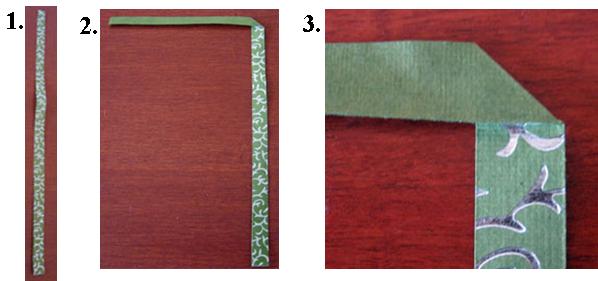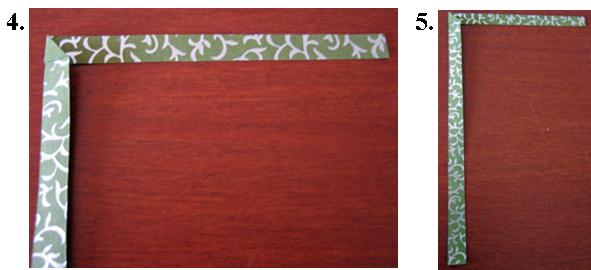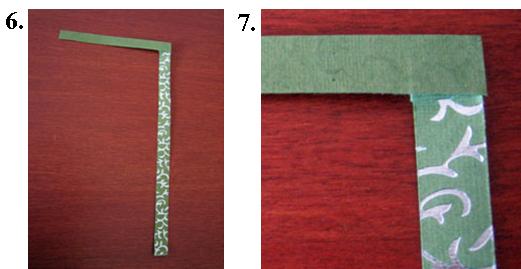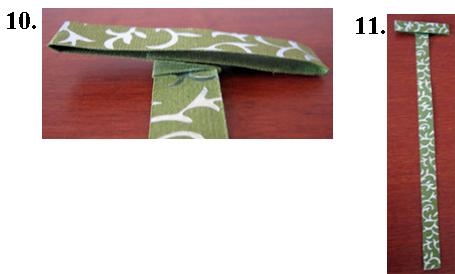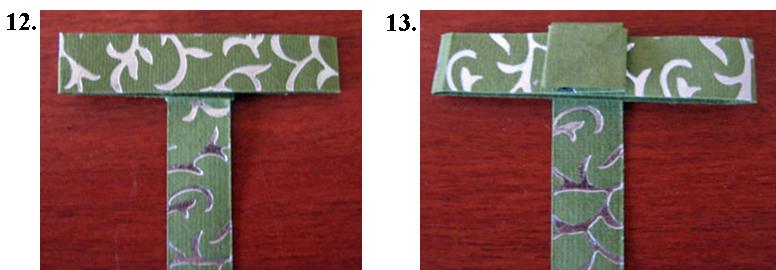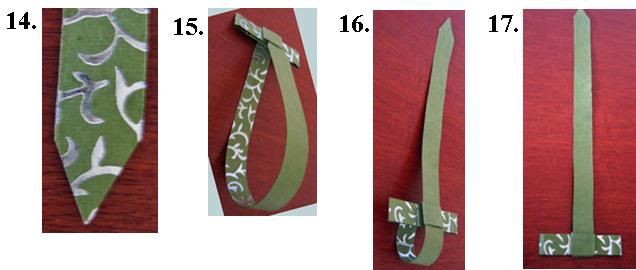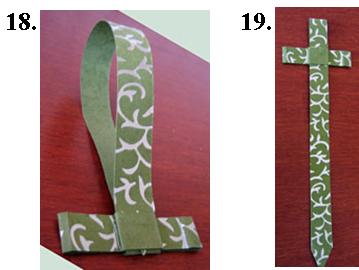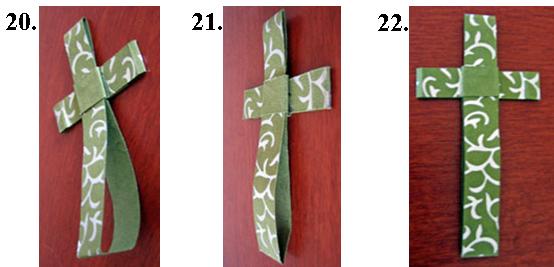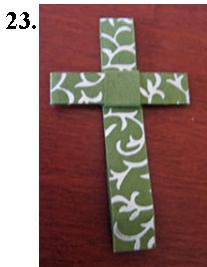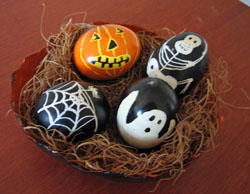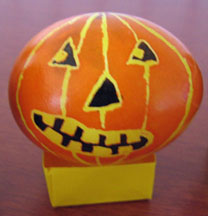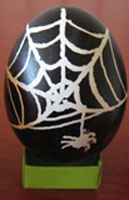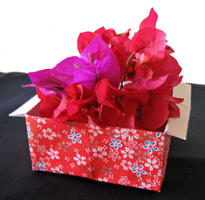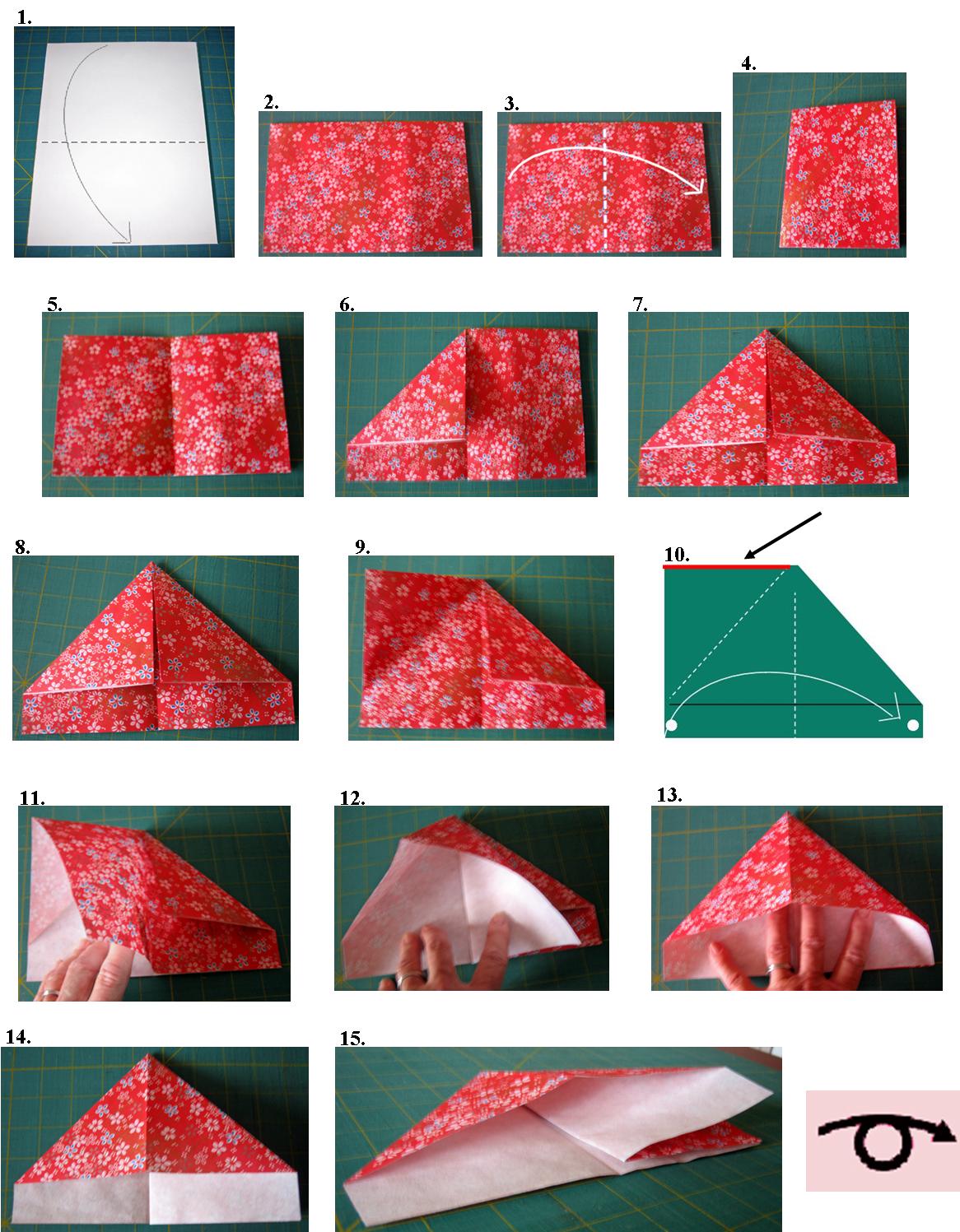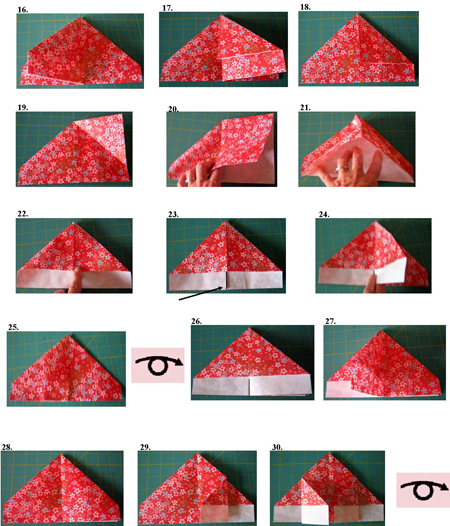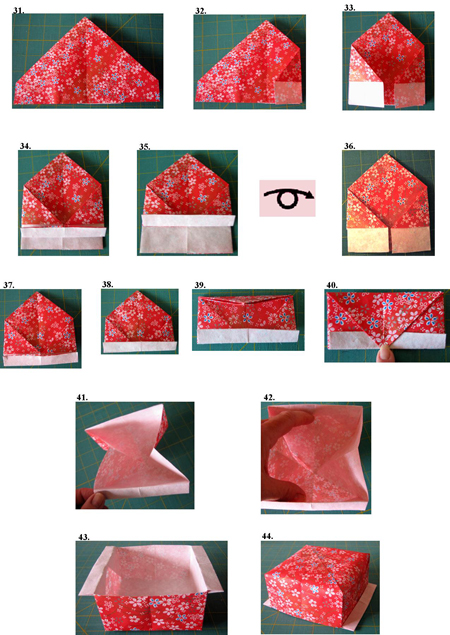I know, this is long overdue and late for Valentine planning — my apologies! But if you’re a last-minute type like I am you may enjoy this cute, clever and relatively easy stand-up heart. There are a couple of slightly tricky steps but I’ve tried to make my instructions and diagrams easy to understand….
All you [...]]]>
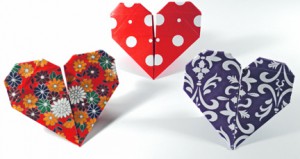
I know, this is long overdue and late for Valentine planning — my apologies! But if you’re a last-minute type like I am you may enjoy this cute, clever and relatively easy stand-up heart. There are a couple of slightly tricky steps but I’ve tried to make my instructions and diagrams easy to understand….
All you need is a square sheet of paper; easiest to follow the directions if it is printed on one side and white on the other. A 6″ square works great, I haven’t tried bigger … I like 4″ as well but if you go too much smaller the folds get kind of thick toward the end.
Start with your square sheet of paper white (or un-printed, or that you don’t want to show when we’re finished) side up. Fold the sheet in half from the top to the bottom and give it a good crease; be sure that the open (not folded) edge is on the bottom, nearest you. Diagram 1 below shows the folded sheet with bottom edges down, and indicates our next move: the dashed lines indicate where we fold next — bring each bottom corner up to the center of the top edge, fold and crease well. The result should look like Diagram 2 below. As shown in Diagram 3, take each of the upper corners, fold them down to the bottom point and crease.

Your result should look like the diamond in Diagram 4. As indicated in Diagram 4, next take each of the top layers of the bottom points and fold them up to meet the top point. Crease each one well, as shown in Diagram 5. Now we are going to focus on the right side first: the result of the next step is shown in Diagram 6. Take a deep breath, it’s not difficult if you pay attention to detail. Note that I have labeled some points on the diagram, and that valley folds are marked by dashed lines and the mountain folds are marked by dashed & dotted lines. It is important as a first step here that you reverse the folds that run from the center to point B and from the center to point A (that is, change the valley fold to a mountain fold and the mountain fold to a valley fold). Then swivel point B over to meet point F; as you do so the bottom half of the opened side will come up and you can lay point D down on top of B (which is now on top of F). Flatten everything out and crease all over.
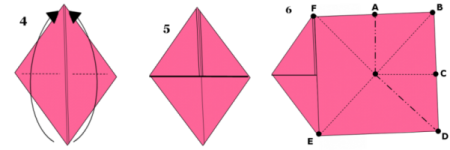
The result should look like Diagram 7 below. Now do the exact same thing on the left side of the model, resulting in Diagram 8. Note that there are two “flaps”, one in each of the upper left and right corners. First take hold of the upper left flap. Gently lift and bring it straight down so that what was the top edge now lies along the center vertical crease, ending at the bottom point. Do the same on the right side. See Figure 9 for what the model will look like after this step. Finally, flip the model over from top to bottom; Be sure your result looks like Figure 10.
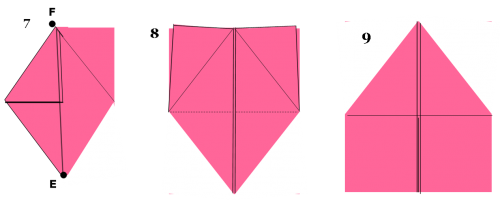
Note the diamond shape in Diagram 10. Fold the top point of the diamond down to the bottom point and crease — see Figure 11 for the result. You can now see in Figure 11 that there are two separate squares at the top. Fold the top edge of each square down to meet the middle horizontal crease, and crease well; see Figure 12. Unfold each of these folds; we will use the creases we just made as landmarks for our next folds, shown in Figure 13.

Now focus on Figure 13. Fold the left and right top corners of each square down to the center of the crease we just created as a landmark; crease and keep folded. Then fold the top points down to that landmark crease as well, and crease, as shown in Figure 14. Voila, see Figure 15 — this is the back side of your heart! Fold the top layer only of the bottom point up a bit and crease; turn the model over to see the prettier side, and use the folded point behind to make it stand up. Play with the location of the fold and see how far up or back you want your heart to tilt.
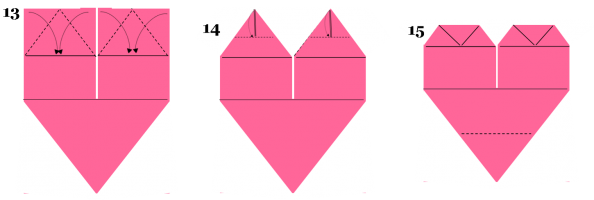
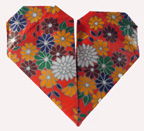 Put one on a card, make a bunch of them to put around a dining table, sneak one onto someone’s pillow … Enjoy!
Put one on a card, make a bunch of them to put around a dining table, sneak one onto someone’s pillow … Enjoy!
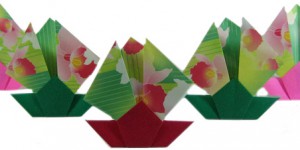
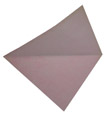
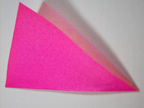
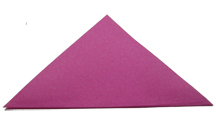
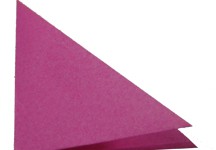
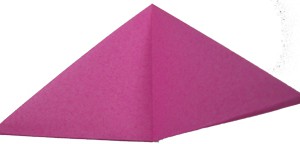
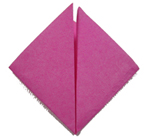
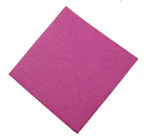
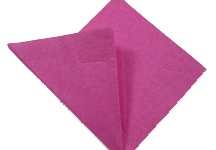
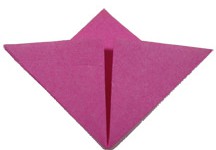
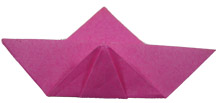 Then turn the whole thing over (see photo).
Then turn the whole thing over (see photo). 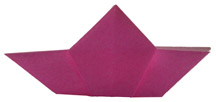

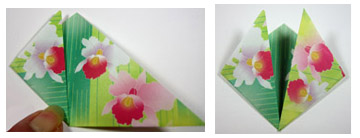
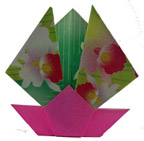

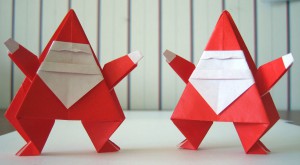
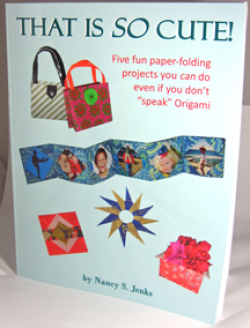
 If you’re interested in some fun, cute and practical Origami crafts for year-round decorating and gift-giving, take a look at my book. It is designed for origami enthusiasts AND beginners, with clear step-by-step instructions with photos — you do not need to understand traditional Origami diagrams to make these models! Just choose appropriate colors and thems for your papers and customize these items for the holidays.
If you’re interested in some fun, cute and practical Origami crafts for year-round decorating and gift-giving, take a look at my book. It is designed for origami enthusiasts AND beginners, with clear step-by-step instructions with photos — you do not need to understand traditional Origami diagrams to make these models! Just choose appropriate colors and thems for your papers and customize these items for the holidays.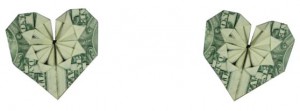



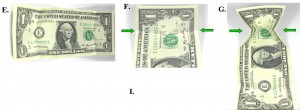




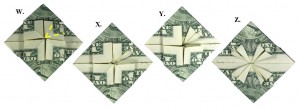
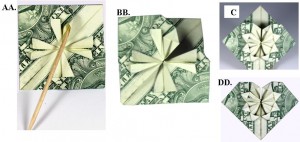


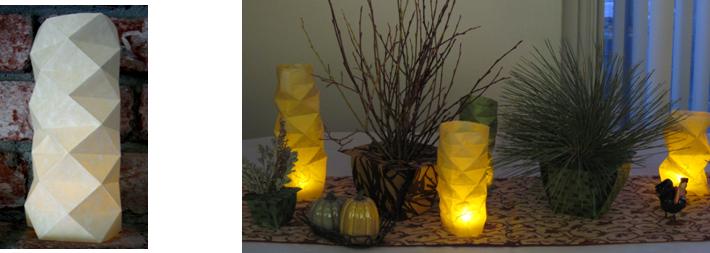
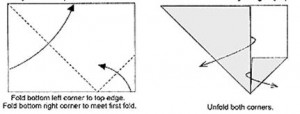

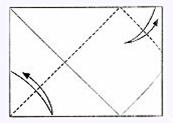

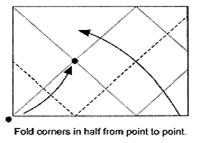
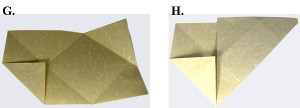
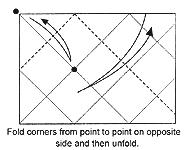

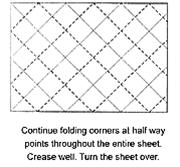
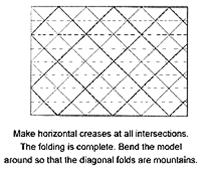
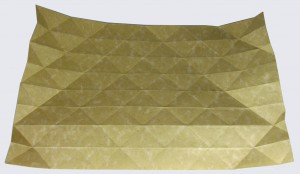
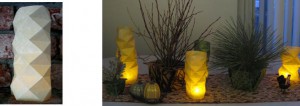
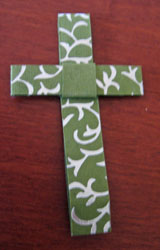 ou happen to have that on hand — it’s often available at craft stores like Michael’s as well as online. But you can use any kind of paper that is available in large enough sheets to let you cut a strip that is 13-15″ long and 1/2 to 5/8″ wide. I like to use paper that is a different color on each side even though only a small square of the “wrong” side shows up in the final model.
ou happen to have that on hand — it’s often available at craft stores like Michael’s as well as online. But you can use any kind of paper that is available in large enough sheets to let you cut a strip that is 13-15″ long and 1/2 to 5/8″ wide. I like to use paper that is a different color on each side even though only a small square of the “wrong” side shows up in the final model.
